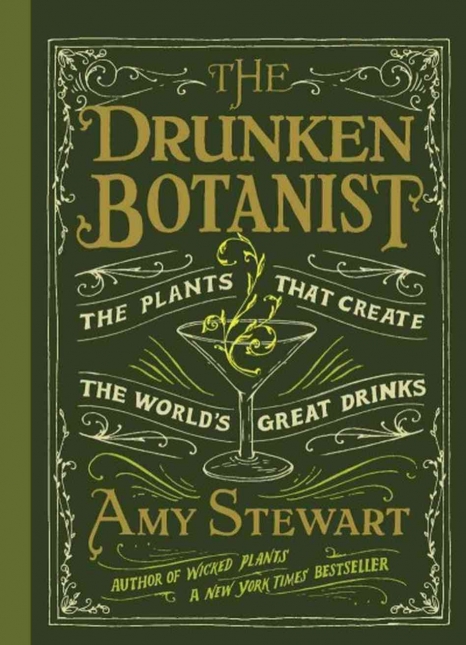The Drunken Botanist: The Plants That Create the World’s Great Drinks
- By Amy Stewart
- Algonquin Books
- 400 pp.
- Reviewed by Carrie Madren
- July 15, 2013
The plants behind your favorite drinks step forward to take a bow.

Let’s raise a glass to author Amy Stewart’s latest book, which delves into the long marriage of botany and beverages — from our favorite classic concoctions to the obscure drinks beloved in geographical niches. The Drunken Botanist has all the spunk, storytelling and candid insight of her previous forays into the worlds of plants (Wicked Plants) and bugs (Wicked Bugs). This book is one part natural history, one part brewing/fermentation/distillation and two parts cultural history; add a jigger of recipes, a splash of interesting sidebars and gardening tips for garnish. Her subjects range from the familiar alcohol building blocks of grapes, wheat and corn to the more outlandish sundew, a carnivorous plant once used in cordials; parsnips, used by colonists to make wine; and myrrh, used commonly in vermouth.
Nearly every plant, tree, fruit or flower you can think of has been used in some cordial, spirit, bitters or beer, and Stewart’s meticulous research has uncovered interesting tidbits about each one. Stewart divides her book into three parts, starting with the plant-based origins of alcohols, proceeding to the plants used to infuse and flavor, and ending with botanical mixers and garnishes that can be grown in your garden.
Stewart divulges the history and mystery of the path from plant to beverage and ought to be required reading for any bartender or mixologist. The 400-page tome has an old-timey feel due to its design and features historic-looking plant illustrations on most pages. Generous sidebars detail various varieties of spirits — “Know Your Gins,” for example, explains the difference between a Plymouth Gin and a London Gin. They will also answer likely reader questions, such as “Why are beer bottles brown?” and divulge gardening hints about how to grow your own citrus, sloes, black currants and more.
Readers will learn fascinating facts and stories behind plants unheard of that play important roles in our modern drinks. The monkey puzzle tree from South America, for instance, is likely the oldest plant in the world from which an alcoholic beverage is made, and corn whiskey was among the first innovations of the early Virginia settlers. Norwegians found that they could improve their aquavit, a caraway-flavored spirit, by taking it on a four-and-a-half-month sea voyage in sherry casks that released flavors in response to rollicking movement and temperature changes.
Tips on growing your own garnishes and ingredients will captivate gardeners and plant lovers. “Gardeners are the ultimate mixologists,” Stewart writes. “Even the most ordinary vegetable patch yields the mixers and garnishes that make remarkable drinks.”
The book contains some 65 recipes, which range from classic to exotic. Stewart’s blood orange sidecar replaces lemon juice with blood orange juice, while her recipe for garden-infused simple syrup will have drinkers infusing herbs, flowers, fruits and spices all summer long. Other detailed recipes include homemade grenadine, prickly pear sangria, Pisco sour, Kir, lavender-elderflower Champagne cocktail, caribou and many more.
Stewart’s witty banter makes the reader feel like a friend perched on the next bar stool: When a traditional mint julep recipe calls for five ounces of bourbon, she notes, “[t]his recipe remains true to his vision, but you may use less bourbon if you wish to feel like more of an upstanding citizen.” A charming narrator, Stewart’s passion and enthusiasm for her subject draw interest to even the dullest of plants.
The book can be equally enjoyed by those who imbibe and those who don’t. Stewart’s love of storytelling and fact-finding creates a fascinating — and thoroughly detailed — read for natural history lovers; others may want to browse sections and peruse only the plants or spirits that pique their interest. All will learn about the intriguing plant-based origins and histories of their favorite drinks, as well as the boozy backgrounds of our favorite plants. “I want everyone who walks through a botanical garden or hikes a mountain ridge to see not just greenery but the very elixir of life — the aqua vitae — that the plant world has given us,” she writes.
Readers may find themselves ordering more creative cocktails at the bar and planting their gardens with innovative concoctions in mind.
Carrie Madren is a freelance journalist based in Northern Virginia.

